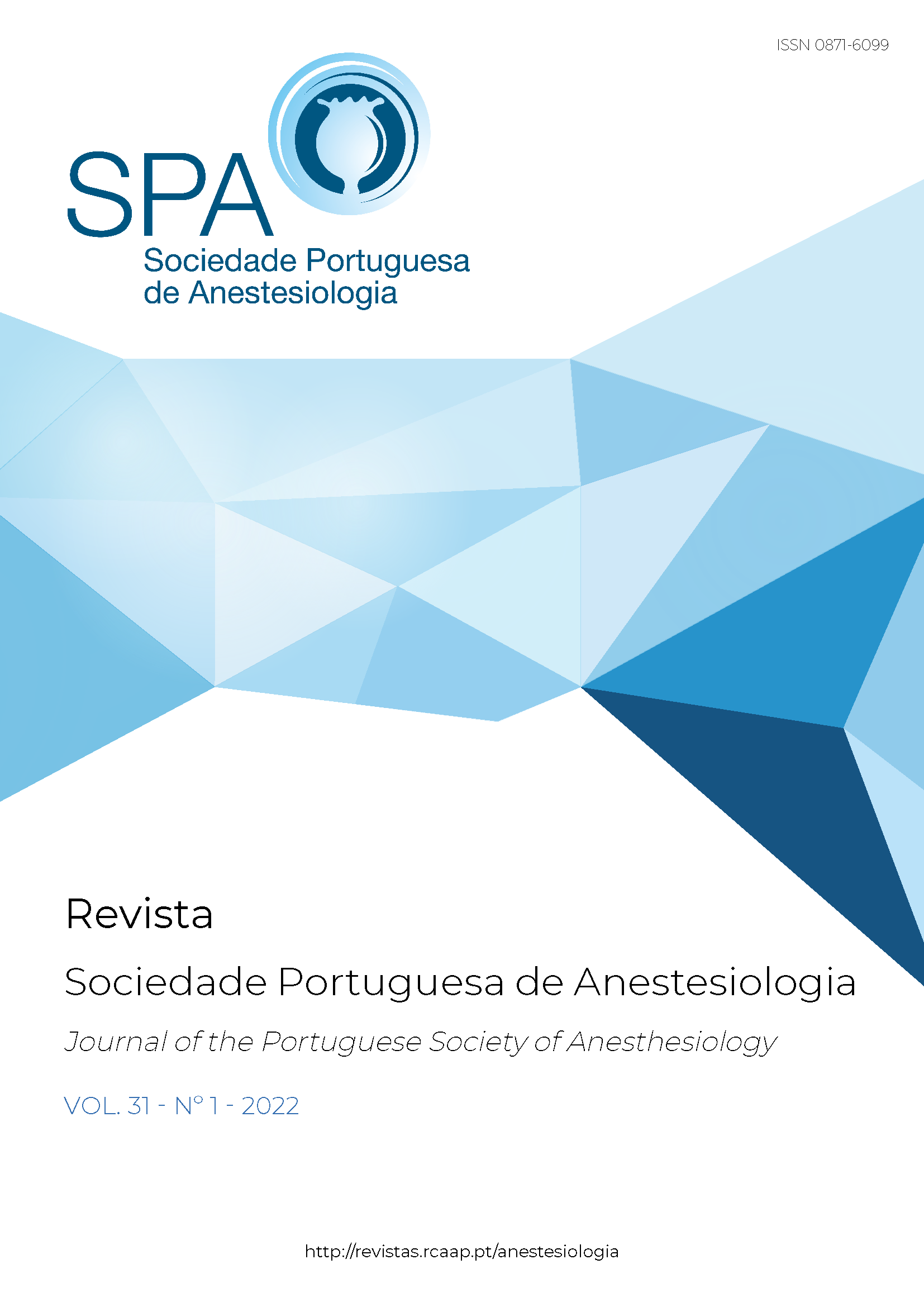Perioperative management of a girl with hemophilia B undergoing dorsolumbar spine posterior instrumentation
DOI:
https://doi.org/10.25751/rspa.25544Keywords:
Hemophilia B, Major surgery, Factor IX, Case reportAbstract
Hemophilia B is a coagulation disorder characterized by a deficiency of clotting factor IX. Women are often heterozygous carriers of the disease, however if their clotting factor levels are less than 60%, they may have an increased bleeding tendency. This is even higher if levels are under 40%. We present a case of a 14-year-old female, with mild hemophilia B (hemophilia B carrier with factor IX level < 40%) who underwent a major surgery: a posterior spinal instrumentation from D6 to L1. The perioperative management was discussed, including the perioperative administration of blood products and coagulation adjuncts. This was coordinated by a multidisciplinary team (orthopedists, anesthesiologists, hematologists and nurses) to provide the best perioperative care and follow-up. Close collaboration and communication among/with the team members and the patient/family was vital throughout.
Downloads
References
Dolan G, Benson G, Duffy A, Hermans C, Jiménez-Yuste V, Lambert T, et al. Haemophilia B: Where are we now and what does the future hold?. Blood Reviews 2018;32:52-60. https://doi.org/10.1016/j.blre.2017.08.007
World Federation of Hemophilia. Report on the Annual Global Survey 2019; 2020; [accessed 2021 June 2]. Available from: https://elearning.wfh.org/resource/report-on-the-annual-global-survey-2019/
Mauser-Bunschoten E. Symptomatic Carriers of Hemophilia. Canada: World Federation of Hemophilia;2008 [accessed 2021 June 5]. Available from: https://www1.wfh.org/publication/files/pdf-1202.pdf
Srivastava A, Santagostino E, Dougall A, Kitchen S, Sutherland M, Pipe SW, et al. WFH Guidelines for the Management of Hemophilia, 3rd edition. Haemophilia 2020;26:1-158. https://doi.org/10.1111/hae.14046
Galen K, d’Oiron R, James P, Abdul- Kadir R, Kouides P, Kulkarni R, et al. A new hemophilia carrier nomenclature to define hemophilia in women and girls: Communication from the SSC of the ISTH. J Thromb Haemost. 2021;19:1883-1887. https://doi.org/10.1111/jth.15397
Ramiz S, Hartmann J, Young G, Escobar MA, Chitlur M. Clinical utility of viscoelastic testing (TEG and ROTEM analyzers) in the management of old and new therapies for hemophilia. Am J Hematol 2019;94:249-256. https://doi.org/10.1002/ajh.25319
Hermans C, Dolan G. Pharmacokinetics in routine haemophilia clinical practice: rationale and modalities-a practical review. Ther Adv Hematol 2020;11:1-15. https://doi.org/10.1177/2040620720966888
Escobar MA, Brewer A, Caviglia H, Forsyth A, Jimenez-Yuste V, Laudenbach L, et al. Recommendations on multidisciplinary management of elective surgery in people with haemophilia. Haemophilia 2018;24:693-702. https://doi.org/10.1111/hae.13549
Downloads
Published
How to Cite
Issue
Section
License
Copyright (c) 2022 Liliana Martinho, Luisa Perry da Câmara, Sara Batalha, Joana Rodrigues, Filipa Carioca, Joana Marques

This work is licensed under a Creative Commons Attribution-NonCommercial 4.0 International License.
Articles are freely available to be read, downloaded and shared from the time of publication.
The RSPA reserves the right to commercialize the article as an integral part of the journal (in the preparation of reprints, for example). The author should accompany the submission letter with a declaration of copyright transfer for commercial purposes.
Articles are published under the terms of the Creative Commons Attribution Non-Commercial License (CC BY-NC).
After publication in RSPA, authors are allowed to make their articles available in repositories of their home institutions, as long as they always mention where they were published.


